Welcome to IBonomics! We are excited to launch and hope you find the website useful! Learn more about us here!
Welcome to IBonomics! We are excited to launch and hope you find the website useful! Learn more about us here!
A diagram illustrating consumer surplus and producer surplus in a competitive market, showing the benefits to buyers and sellers at the market equilibrium.
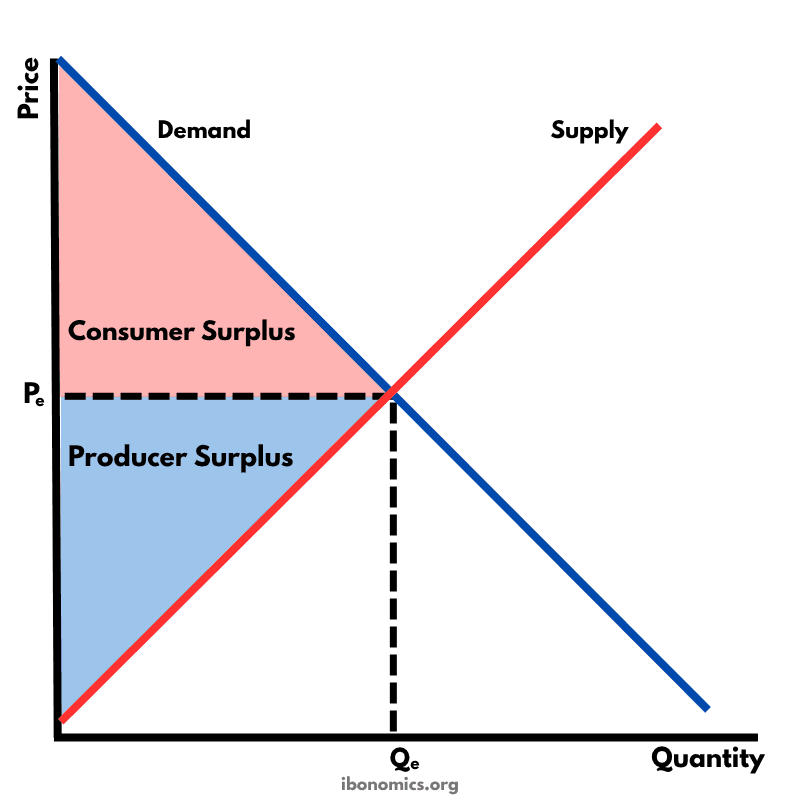
Demand Curve: Slopes downward, showing the inverse relationship between price and quantity demanded.
Supply Curve: Slopes upward, showing the direct relationship between price and quantity supplied.
Equilibrium Point (Pe, Qe): The intersection of demand and supply curves, where quantity demanded equals quantity supplied.
Consumer Surplus: The area above the price level and below the demand curve — represents extra benefit to consumers.
Producer Surplus: The area below the price level and above the supply curve — represents extra benefit to producers.
The market reaches equilibrium where the demand and supply curves intersect, at price Pe and quantity Qe.
Consumer surplus is the area above the equilibrium price and below the demand curve — it represents the extra benefit consumers receive when they are willing to pay more than the market price.
Producer surplus is the area below the equilibrium price and above the supply curve — it represents the extra benefit producers receive when they sell at a higher price than their minimum acceptable price.
The total economic surplus (consumer + producer surplus) is maximized at equilibrium, indicating allocative efficiency.
Any shift in demand or supply, or government intervention (e.g. price controls, taxes), can reduce total surplus and create deadweight loss.
Explore other diagrams from the same unit to deepen your understanding
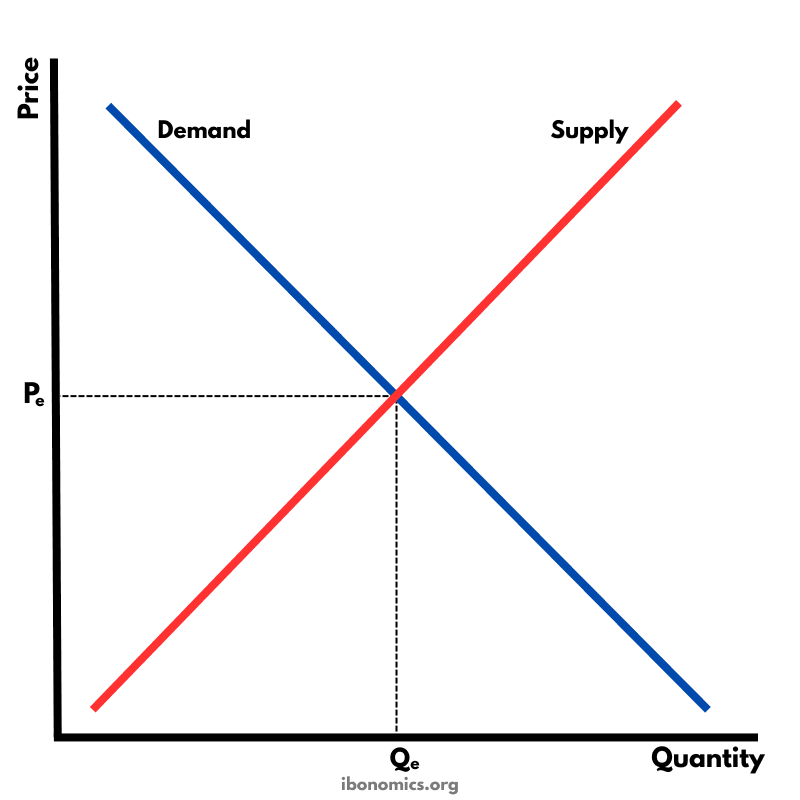
The fundamental diagram showing the relationship between demand and supply in a competitive market, determining equilibrium price and quantity.
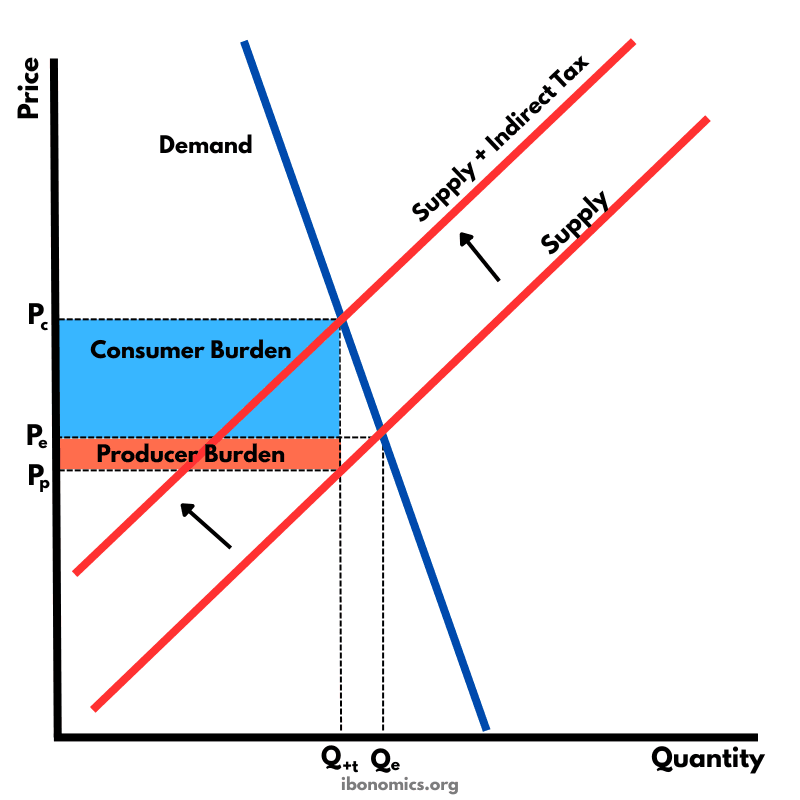
A supply and demand diagram showing the effect of an indirect tax on a good with inelastic demand. The consumer bears a larger share of the tax burden.
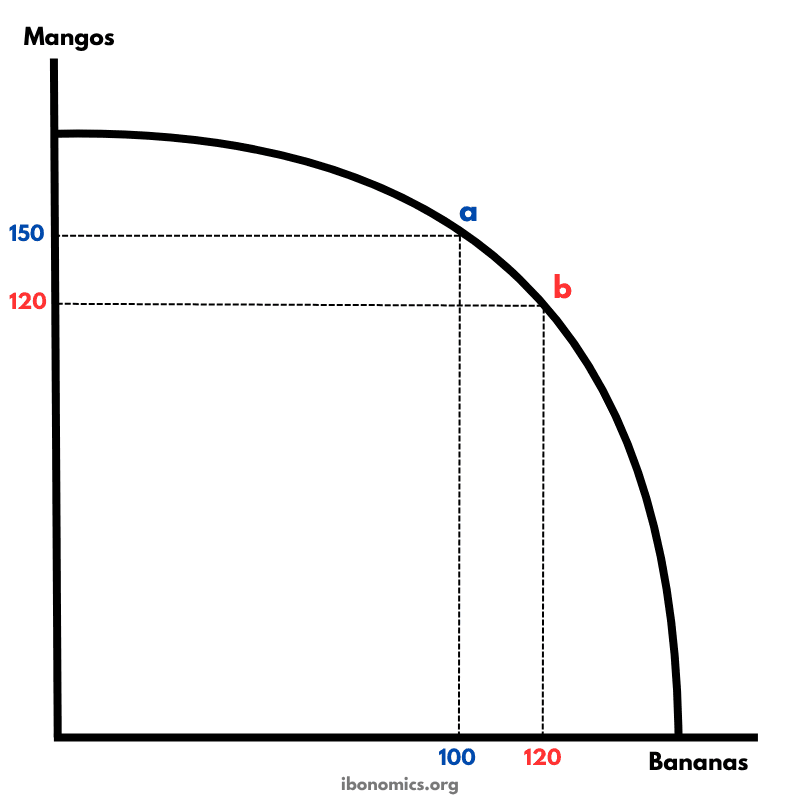
A production possibility curve illustrating the concept of opportunity cost and the trade-offs between producing two goods: mangos and bananas.
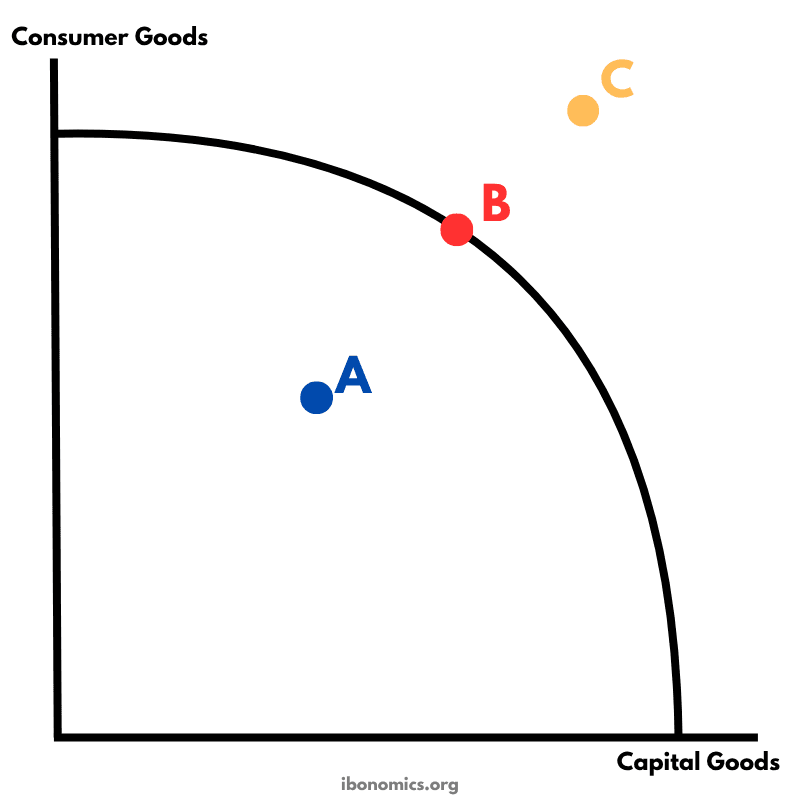
A PPC diagram showing different levels of production efficiency and economic feasibility using combinations of consumer and capital goods.

A model illustrating how money, goods, services, and resources flow between households, firms, the government, the financial sector, and the foreign sector in an economy.
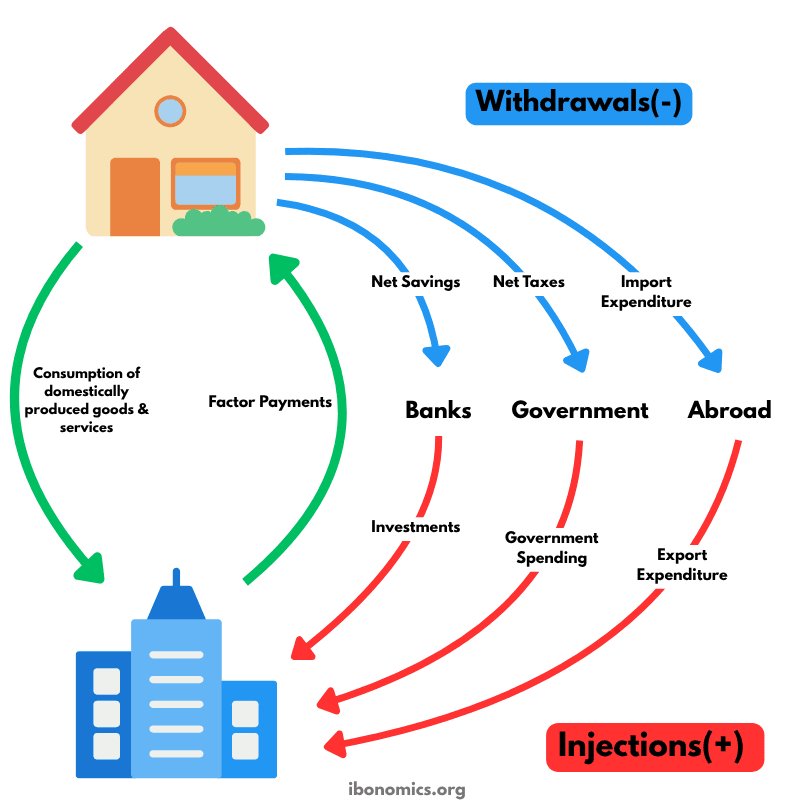
A refined circular flow model highlighting the roles of injections and withdrawals in determining national income and economic equilibrium.